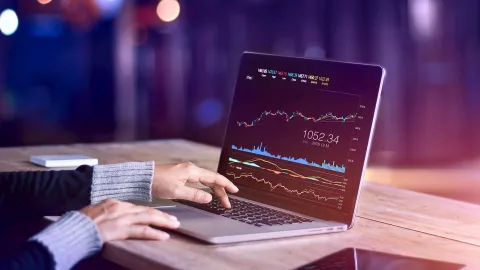Digital transformation and geopolitics reshape trade finance landscape

Global trade has been in the headlines throughout 2025, thanks in large part to the U.S. administration’s rollout of new tariffs on international trading partners. In addition to navigating tumultuous geopolitical developments, trade and supply chain finance is in the middle of a digital transformation journey, and emerging AI tools offer new ways to streamline archaic manual processes – and attract a new generation of talent to the industry.
Supply chain diversification and nearshoring on the rise
Trade values are holding up in 2025, but trade volumes are softer and forecasts suggest growth of only 1% year-over-year*. North America continues to dominate** trade flows, but the APAC region is growing quickly, notes Anastasia McAlpine, Head of Product Management for Trade & Supply Chain Finance at Finastra. In particular, Vietnam and India are emerging as key players among businesses adopting a “China plus one” supply chain strategy.
According to Andrew Betts, Chief Growth Officer at CredAble, 90% of U.S. business owners view the Trump administration’s tariff policy as a risk to their supply chains. These developments, along with other geopolitical and macroeconomic conditions, are driving increases in onshoring and nearshoring, with U.S. factory building and capital expenditures picking up steam.
Financial institutions are no stranger to complexity and geopolitical uncertainty. Those that leverage technology to remain agile in an uncertain environment can capture a competitive advantage, says Chris Eriksson, Senior VP Sales at Cleareye.AI. “Today’s rules won’t solve tomorrow’s problems. The differentiator in a complex and competitive global landscape will be technology.”
Technology is transforming trade finance
Trade finance is changing for a sector not generally renowned for the early adoption of new technology. This norm is shifting as banks, non-bank financial institutions and corporates embrace cloud-native, modular platforms and microservices for trade and supply chain finance. “Gone are the days of large, monolithic code that is costly and takes forever to handle change requests,” says Andrew. For example, today’s corporate clients increasingly expect strong ERP integration from banking partners. Some banks are engaging SAP engineers as part of their client facing teams to meet these expectations, as well as developing more extensive digital customer journeys and experimenting with data flows from logistics platform providers to provide real-time trade verification.
“Blockchain and other technologies are going to revolutionize how we do business,” says Chris. Platforms that enable banks and fintechs to evaluate best-of-breed solutions, integrate with digital public infrastructure, and deploy AI and machine learning tools are vital to future-proofing trade operations. But while global financial institutions have substantial technology budgets, a large portion of those funds tend to be focused on regulatory and compliance priorities.
A changing talent pool in trade finance
Technology also has a role to play in attracting talent to trade finance who understand data. Financial institutions now prioritize product, data, and engineering skills to modernize workflows, operations and transaction controls. Today’s talent has the ability to work with ERP systems, connect and simplify workflows, automate more routine tasks and supervise AI as the business evolves beyond recognition.
Early career professionals look for opportunity, the latest technology, and measurable impact, not paper and processing. “We’re creating a more vibrant industry with new technology and ways of working across the financial and physical supply chain, it’s an exciting time to be part of developing the future of global trade” says Andrew.
Sources:
*https://www.oecd.org/en/publications/oecd-economic-outlook-volume-2025-issue-1_83363382-en.html#:~:text=Global%20growth%20is%20expected%20to,1.1%25%20in%20the%20United%20States
**https://assets.publishing.service.gov.uk/media/685acac945eea7ef2e620785/global_trade_outlook_june_2025.pdf
https://assets.publishing.service.gov.uk/media/685acac945eea7ef2e620785/global_trade_outlook_june_2025.pdf
https://www.refteck.com/blog/the-china-plus-one-strategy-why-india-is-emerging-as-the-best-manufacturing-destination/



